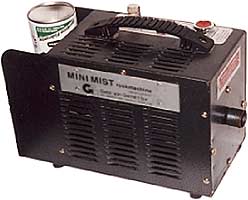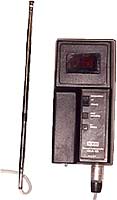Introduction
Control of the environment, i.e. temperature, humidity, CO2 level, etc. is required for best production performance. Today most modern pig buildings comprise ventilation computer control systems, which automatically adjust the air flow rate, addition of heat or cooling via electronic sensors. However, the environmental condition will always depend on whether the ventilation system is designed correctly and/or is well maintained.
Checking the environment
The most important way of examining the conditions of a building is using ones senses, since these might tell you immediately, whether an environmental problem is present. Moreover, simple observations of the environmental conditions might aid in detecting the cause of an environmental problem.
Table 1. Examples of simple observations, which might indicate specific problems and possible solutions.
| Check pig behaviour | |
| • Huddling • Wallowing/lying on side • High activity |
→ too cold/draught → too hot → draught |
| Check environment | |
| • Stuffy/humid • Ammonia smell • Dusty |
→ too low ventilation rate → too low ventilation rate → too dry/too much heat |
Environmental sampling and troubleshooting must be planned carefully, since the surrounding conditions vary over time and space. One must bear in mind that environmental elements such as outside temperature might vary considerably between night and day. Therefore, measurements taken during the day do not necessarily reflect the environmental conditions during the night. In addition, there is variation between season and years.
Most troubleshooting events in practice are point observations reflecting the state of the environment on a given day. To estimate the effect of an environmental factor more accurately continuous sampling is required.
Instruments
There are a number of methods and instruments available for checking if the ventilation system is working properly as well as for troubleshooting the environment. A few simple instruments are described below.
A maximum-minimum thermometer is a simple inexpensive instrument, which measures temperature extremes. It should be used in all rooms on a regular basis to control if the environmental conditions are kept within acceptable limits. Since it measures the extreme temperatures it is a good way of controlling if the temperature sensor of the ventilation system and the system itself is working properly.
A psychrometer is used for measuring relative humidity. It comprises a dry bulb and a wet bulb thermometer and the measurement is based on the thermodynamic relation between the air’s moisture content and wet-bulb temperature. The relative humidity is not measured directly, but must be estimated from a table.
 |
Figure 1. Maximum-minimum thermometer (left) measures extreme temperatures and a psychrometer (right) measures relative humidity indirectly via wet-bulb and dry bulb temperature (photos Poul Pedersen).
A smoke generator is an instrument that may be used for examining air flow patterns. The smoke is generated from a chemical, which is released from a container, when a button on the instrument is activated. The smoke generator is placed below the air inlet and when the smoke is released the air flow pattern becomes visible. The air velocity in inlets and in the animal zone might be measured via an anemometer.
 |
 |
Figure 2. Smoke generator (left) used for checking air flow pattern and anemometer (right), which measures air flow rate (photos Poul Pedersen).

The first step in evaluating a presumed ventilation problem is to determine if the problem is valid and the best answer to that is to check the pigs’ behaviour. The animals are exposed to the building environment continuously and are responding to it via behavioural modification of their posture and activity pattern. Next step is to start measuring temperature, air flow patterns, etc.
Some typical examples of ventilation problems are described below:
Problem 1
Building is colder than desired even though outside temperature is normal. Pigs are huddling.
Possible causes
• Fan controls set at too low temperature
• Temperature calibration of control is wrong
• Ventilation inlets open too far
• Poorly insulated building
• Building has too many leakages
• Too low animal density
• Insufficient heat supply
Additional checkpoints
• Place thermometer next to thermo-sensor and check temperature
• Check if thermo-sensor is exposed directly to incoming fresh air
• Check for condensation on interior ceiling and walls
Problem 2
Building is too warm.
Possible causes
• Fan controls set at too high temperature
• Insufficient fan capacity installed for amount of heat being produced
• Dirty fans and baffles
• Ventilation inlets open too little
• Short cut between air inlet and exhaust
• Exhaust fan is not working
• Cooling system not working
Additional checkpoints
• Check if exhaust fans are working properly
• Check thermostat settings
• Check maintenance of cooling system
Problem 3
Too much moisture in building – air feels stuffy and damp
Possible causes
• Ventilation rate too low
• Too little heat supply
• Large wet surface area such as fully slatted flooring not considered when designing the ventilation system
• Water leakage
• Diarrhoea




